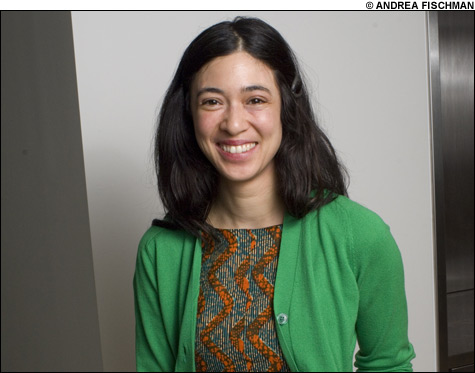 |
There are many end-of-relationship rituals. One classic is the tossing of certain items that remind you of the person you now miss too much. (Or setting them on fire. Or putting them in a box labeled "EMOTIONAL BAGGAGE. NEVER OPEN.") Perhaps you keep other things that don't seem to matter till later. As we grapple with a national economic crisis, it's a particularly appropriate time to mull over the significance of our possessions and the lack thereof: what they mean, how they haunt, why they hurt. In Important Artifacts and Personal Property from the Collection of Lenore Doolan and Harold Morris, Including Books, Street Fashion, and Jewelry (Sarah Crichton/FSG), Leanne Shapton does just that. (A film version is set to star Natalie Portman and Brad Pitt.) Part graphic novel, part novel, part pretend photo album, Important Artifacts is a personal auction catalogue that maps out the time line of one fictional couple's relationship. When I reach Shapton — an illustrator and the art director of the New York Times' op-ed page — by phone at her New York apartment, she explains how newspaper columns, stolen salt shakers, love notes written on playbills, and a burnt backgammon set function as clues, cracking open the mysteries of Lenore's heart and Hal's without fully unlocking either one.
What prompted you to tell the story of a couple through their belongings?
I really like the idea of objects being haunted and holding more history than they appear to. I also wanted to talk about how we keep these things. What do you take from one relationship and bring into a new one? What can you not throw away? I was interested in the life and the romance of things, of objects that didn't have any value but sentimental value.
How did you go about selecting the things that suited Lenore and Hal? Did their personalities or their possessions come first?
I was writing a four-year love story and thinking very universally: what happens to people in four years? I had to distill certain points into things. Then I had to produce that napkin with the number on it, or I had to produce that photograph of them. So it was story first, objects later. But as I got more of the story or more of the objects filled in, I would see things at Goodwill or at thrift stores or my own things and go, "I want to include this fake snow-spray-painted Christmas tree!" So I'd throw that in there for texture, or to fill out a theme, so to speak.
What would you say is the most telling lot, one that sums them up as a couple?
One that just sprang to mind was a really innocuous one, which is the photo of the spice jars with the quarters in them. It happens later in the book, but inventing that lot, I really wanted something to emerge out of their lives. Hal travels a lot, he drives a lot, Lenore is a cake columnist, she bakes, and that was a nice little quiet merging of their lives that I like. The spice jars with the quarters in them just would not exist in any other relationship. It was just like everything aligned for these spice jars.